Description
Bavarian beer democratic - suited to folk festivals and informal gatherings. Snacking should also be a match - nothing complicated and porcelain rests. On a wooden Board all the wealth and put it and cut and spread with it and put in the mouth. Beer - the drink is cheap, so the appetizer is simple, the workers and peasants. Peasants - they are a frugal people, the remnants of bread, sausage or cheese are not scattered - they know. Know how these remains knead to be cheap and cheerful. Get angry if you from their snacks is not happy. Proven for centuries that beer better not happen: then and radish, onions, obazda from the remnants of cheese and sausage salad drenched in vinegar, so in the heat made. And cold beer, but on a hot day – it's not for me to teach you...
Ingredients
-
Bread
-
Butter
-
Radishes
-
Chives
-
Soft cheese
200 g
-
Cream cheese
100 g
-
Butter
100 g
-
Red onion
1 piece
-
Red sweet pepper
2 Tbsp
-
Salt
-
Black pepper
-
Cumin
-
Sausage
250 g
-
Cucumber
4 piece
-
Onion
1 piece
-
Vegetable oil
5 Tbsp
-
Vinegar
4 Tbsp
-
Brine
-
Water
5 Tbsp
-
Black pepper
-
Sugar
-
Mustard
1 Tbsp
Cooking
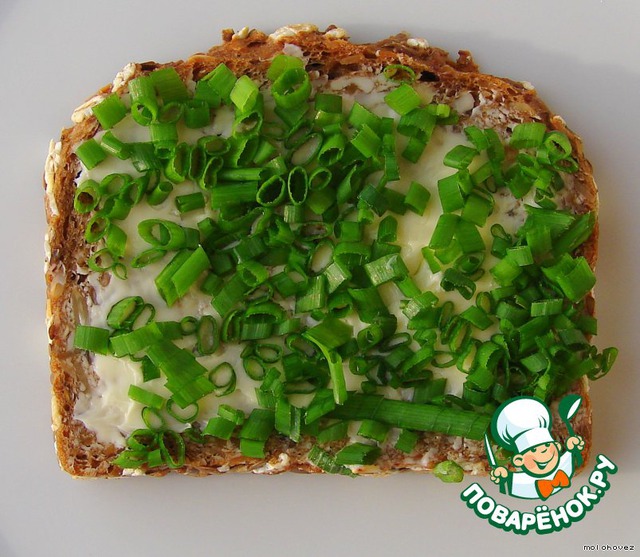
Onion cut into. Bread spread with oil and the oil side to stick to the onions. Flip the sandwich is ready.
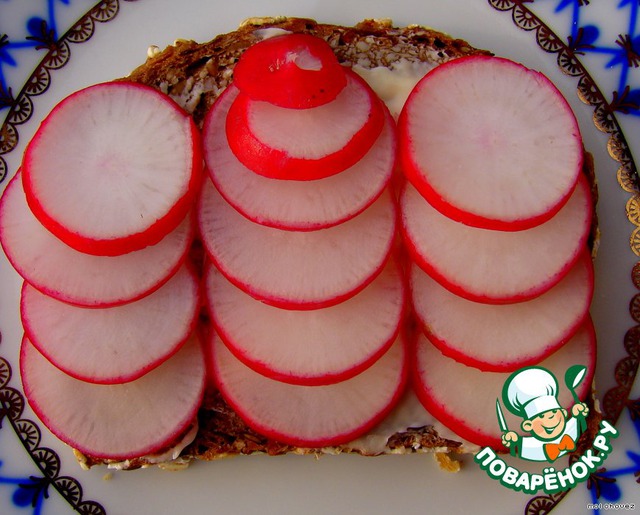
Radish slice, spread on buttered bread.
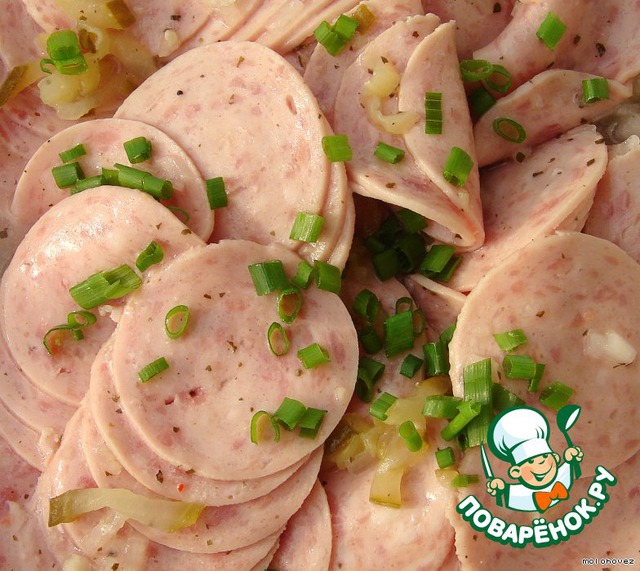
The sausage salad (Wurstsalat): Sausages clear from the shell and cut into circles or strips. Onion and pickled cucumber - finely chopped. To make the sauce, mix all the ingredients. Pour the salad sauce, mix well and place in the refrigerator for at least half an hour to marinate. For all its primitiveness, this salad has a quite fresh taste and because it is served chilled, particularly good in hot weather. Making this salad at home, the Bavarians will add any sausages (the remains of smoked, semi-smoked sausages, frankfurters, etc.)
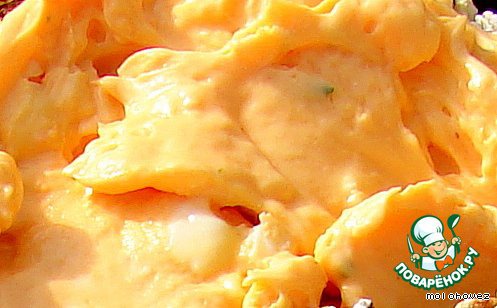
Obatzda (Obazda) is a traditional cheese mixture, consisting of several varieties of cheese (at home again, the remnants of cheese) that you spread on bread. The main component is a soft cheese Camambert. All the ingredients (as they should be at room temperature) is thoroughly mixed to almost homogeneous smooth mass. To taste you can add more or less of Targa, for example. The onion can be finely chopped and mixed with cheese or add only at the end, garnished with cheese portion of onion rings.
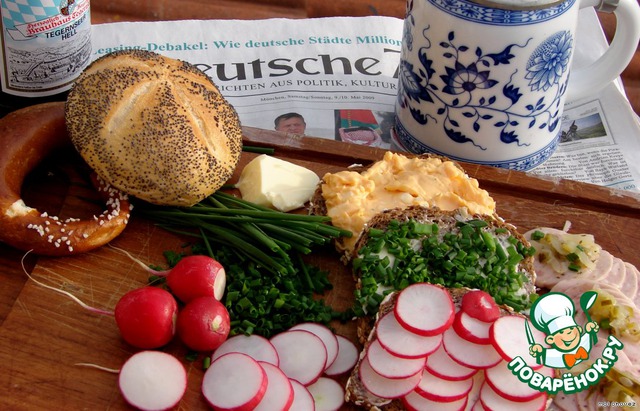
Now put it all on the Board, not to forget a couple of bottles of cold beer and ...
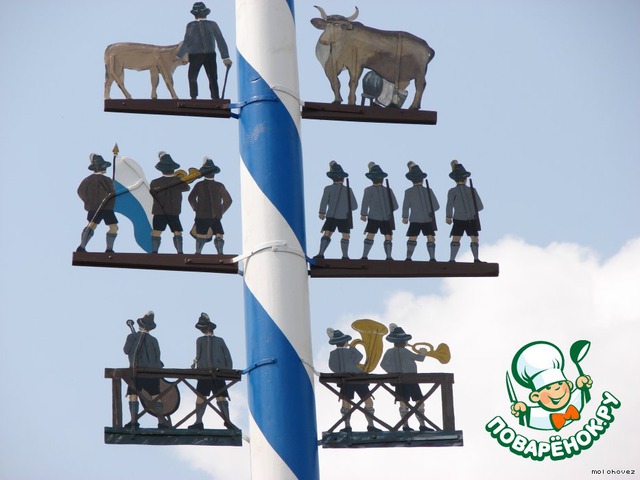
"Prost!", as they say the Bavarians!!!
Historical note: Beer is expensive has never been. Malt, hops and water is all that it need. Beer began to brew in the monasteries of Germany since the VII century. Strangers, who visited the monastery, the monks poured a mug of beer, were given a slice of bread and piece of cheese. Beer, you can say, it was the equivalent of Russian kvass in the home. Later, the monks received the first "license" for the production and sale of beer to have the funds for the maintenance of monasteries. Beer garden (Biergarten) is typical for the Bavarian outdoor restaurant with beer cellars. Sad - because the trees with a big spreading canopy, such as chestnut trees, specially planted to in the heat to protect from the sun, the glaciers of beer, which was allowed to cook only in the cold season. Beer gardens first appeared in Munich in the 19th century. From other restaurants, they differ in that you can still bring in their home-cooked food and legally laid out on a table, order only a glass of beer. The peasants and working people, and brought about the set referred to in the recipe. Such snacks are now served in the beer gardens and the beer festival "Oktoberfest" which takes place in autumn in Munich.
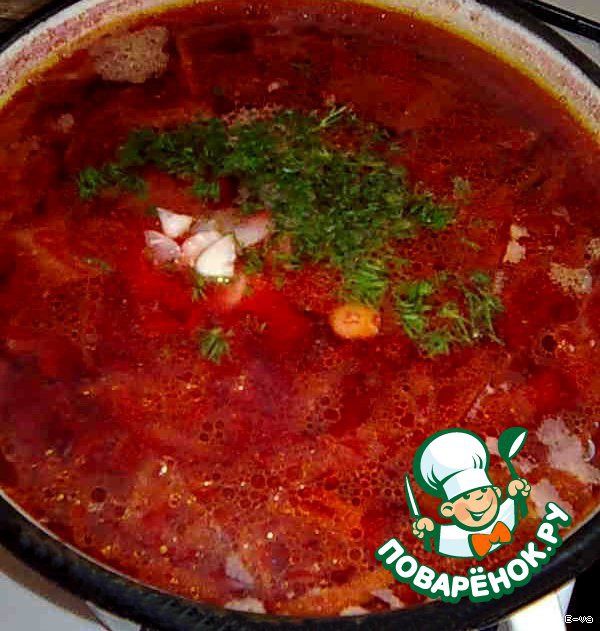
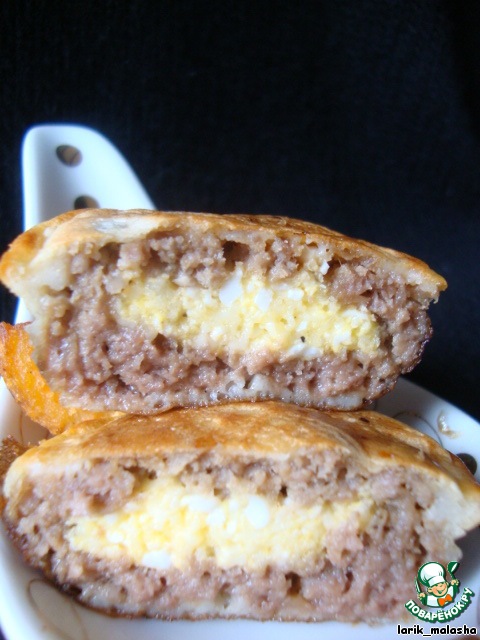

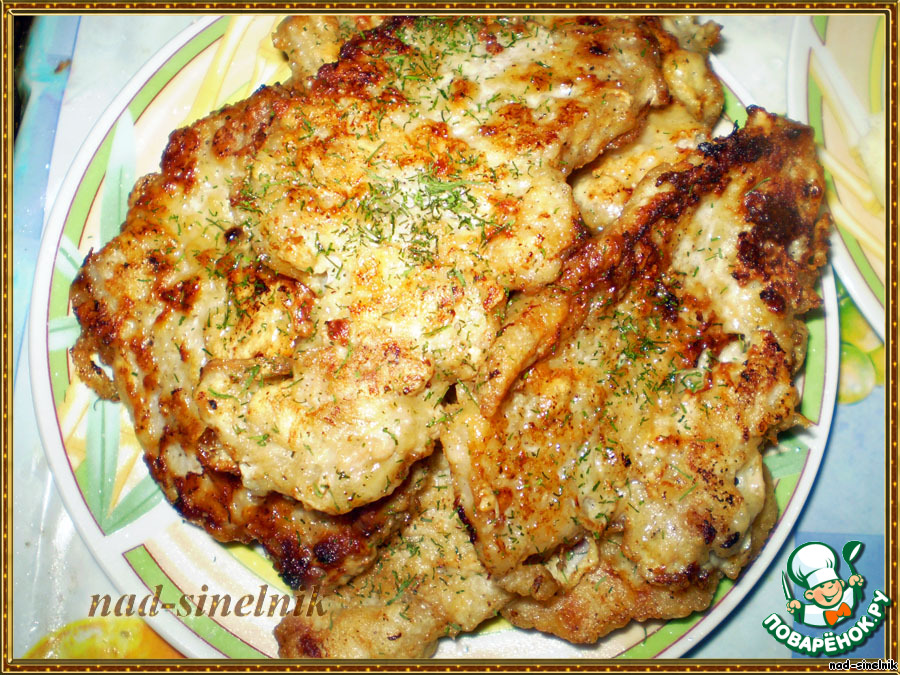
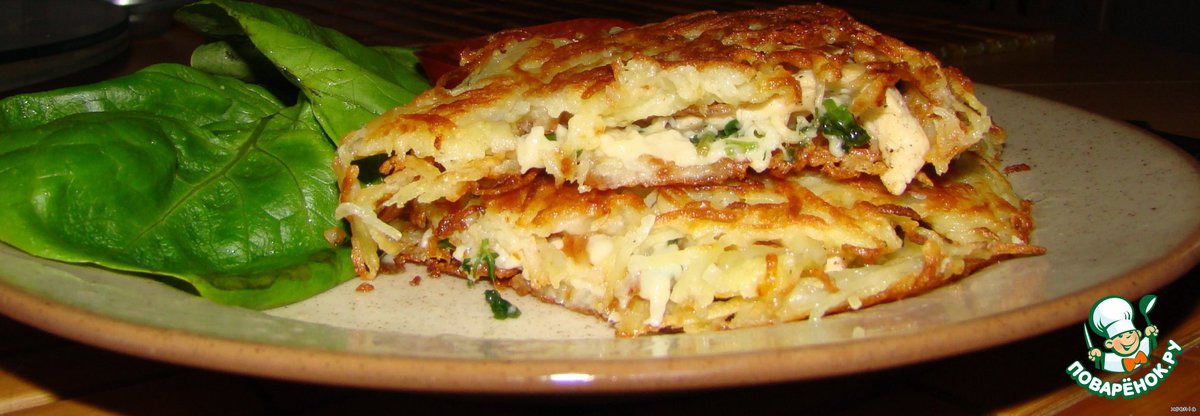
Leave a comment or a recipe review
Leave comments can only registered users.
Register, or Login if you are already registered.